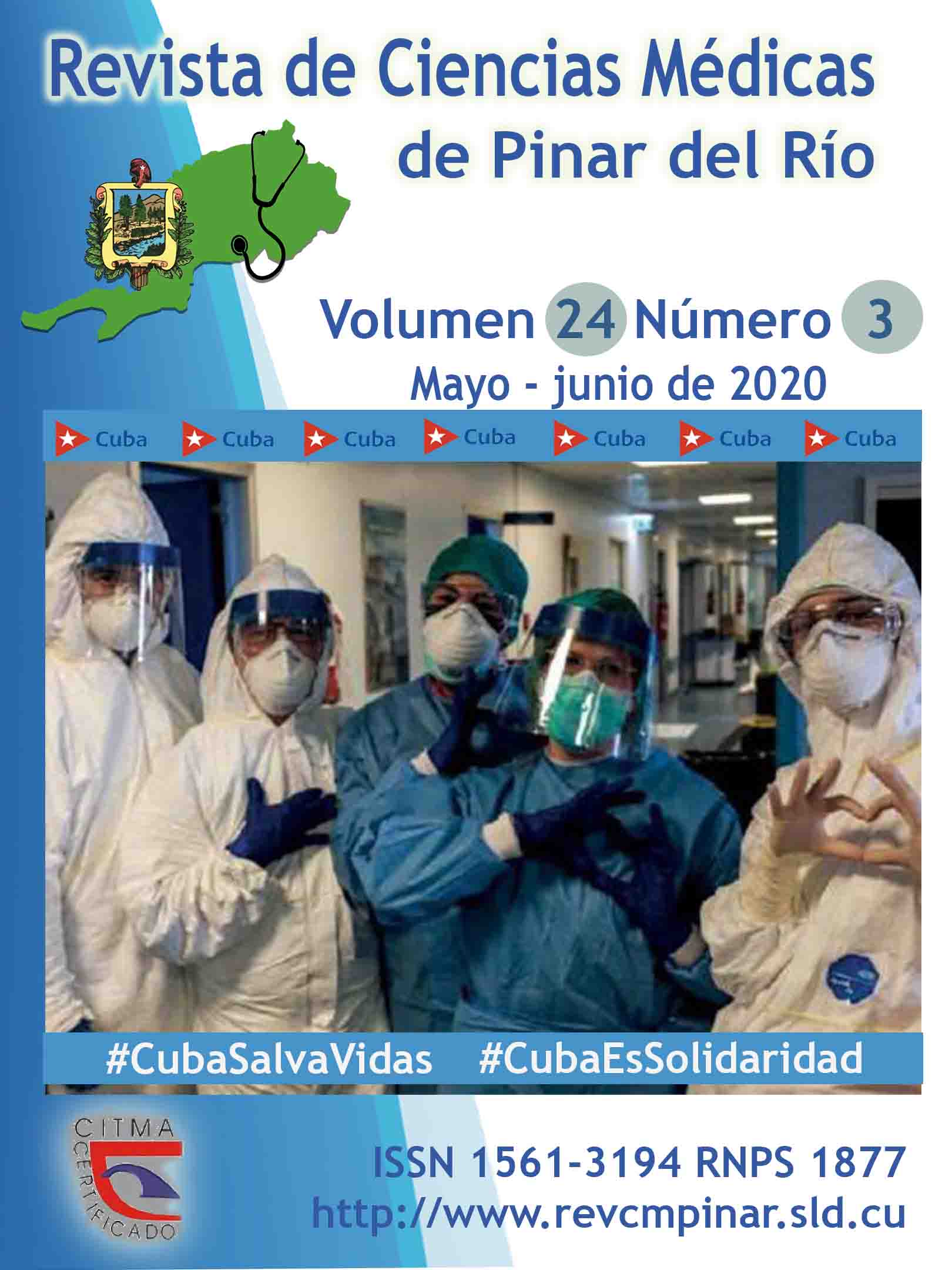Level of capable donors' knowledge not incorporate to the donation in a popular advice
Keywords:
BLOOD, BLOOD BANKS, BLOOD DONORS, BLOOD SPECIMEN COLLECTION, PATIENTS.Abstract
Introduction: qualified personnel who work in blood banks and institutions prepared for such activity perform blood donations.
Objective: to assess the level of knowledge concerning blood donation of those who are apt but not willing to donate at three doctor’s offices in la Guabina people’s council.
Methods: an observational, descriptive and cross sectional research was conducted at 45, 35 and 25 doctor’s offices from la Guabina People’s Council, Pinar del Rio municipality from September 1 ,2017 to March 15 , 2018. The target group comprised 236 patients (18 to 65 years old); who are apt to donate blood but not willing to be involved in such process from the doctor’s offices chosen.
Results: female gender prevailed (52,97 %). The age group that predominated was 45-49 (13,98 %). The main cause of denial was the fear of puncture (61,44 %). The level of knowledge concerning blood donation, fair level predominated in topics related to voluntary blood donation (48,73 %), the donation of blood (52,12 %), along with what follows with the donation (50.85 %); reaching high grades of fair concerning the level of global knowledge of blood donation (40,25 %).
Conclusions: an educational intervention concerning blood donation could increase the levels of knowledge in the participants, aimed at including them into the process.
Downloads
Downloads
Published
How to Cite
Issue
Section
License
Authors who have publications with this journal agree to the following terms: Authors will retain their copyrights and grant the journal the right of first publication of their work, which will be publication of their work, which will be simultaneously subject to the Creative Commons Attribution License (CC-BY-NC 4.0) that allows third parties to share the work as long as its author and first publication in this journal are indicated.
Authors may adopt other non-exclusive license agreements for distribution of the published version of the work (e.g.: deposit it in an institutional telematic archive or publish it in a volume). Likewise, and according to the recommendations of the Medical Sciences Editorial (ECIMED), authors must declare in each article their contribution according to the CRediT taxonomy (contributor roles). This taxonomy includes 14 roles, which can be used to represent the tasks typically performed by contributors in scientific academic production. It should be consulted in monograph) whenever initial publication in this journal is indicated. Authors are allowed and encouraged to disseminate their work through the Internet (e.g., in institutional telematic archives or on their web page) before and during the submission process, which may produce interesting exchanges and increase citations of the published work. (See The effect of open access). https://casrai.org/credit/



